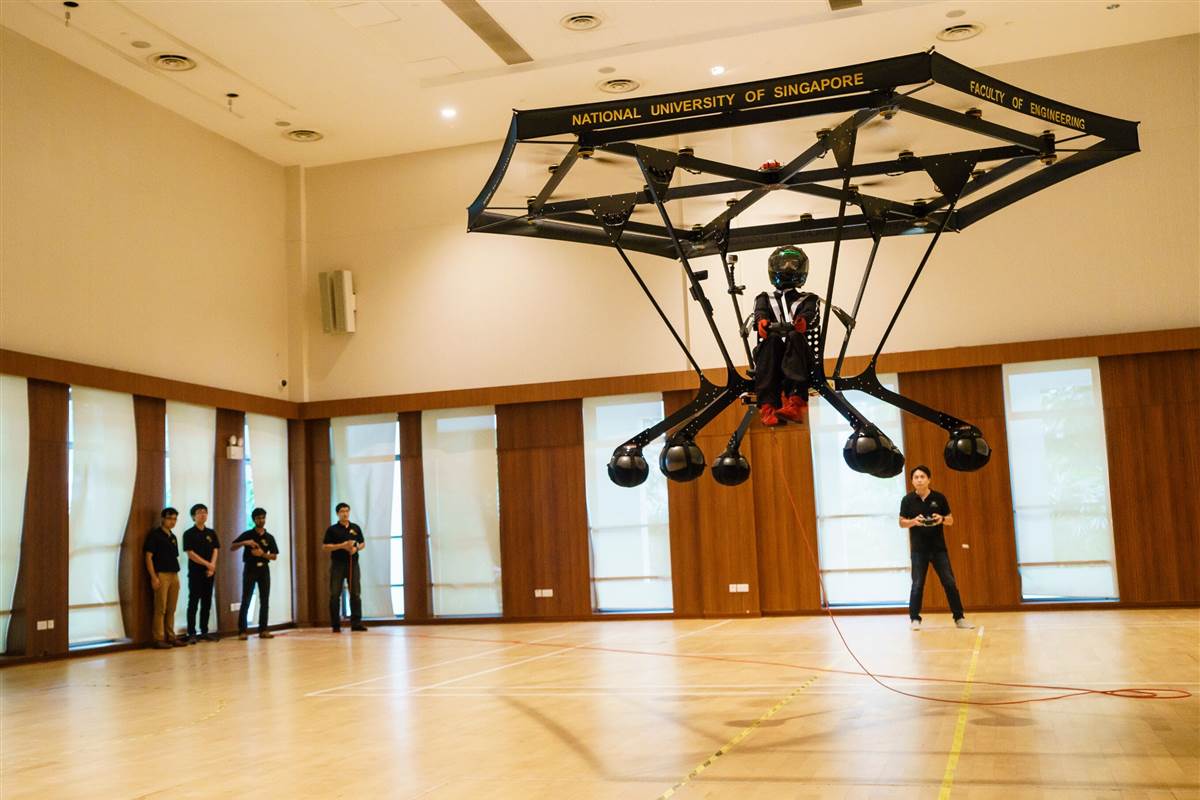The flying machine is built using a hexagonal frame composed of anodized aluminum poles, carbon fiber plates, and Kevlar rope. In the center of the frame is chair for a single operator, who can control the thrust, pitch, roll, and yaw of the machine using a customized flight control system. Underneath the pilot are six landing gear legs that are attached to the frame using a 3D-printed mount. Each landing leg has an inflatable ball at the end that acts as a shock absorber to make each landing as soft as a feather.
The vehicle has 24 motors with propellers that combine to provide enough thrust for vertical takeoff and landing. Once in the air, the machine can travel around a room with ease. The system is powered by rechargeable lithium batteries that together provide a total power output of 52.8kW. The batteries operate independently allowing the craft to continue to fly even when a battery fails unexpectedly. Besides controls for flying, the machine also includes a stabilization system for a smooth flight, a variety of preprogrammed flight modes such as hover to help users fly the craft and a pilot safety system that will help land the vehicle if the pilot loses control.
Now that the basic framework of the vehicle has been developed, the team plans to refine the Snowstorm and make it public flight worthy by adding new flight safety measures, improving the propeller and motor setup and tweaking the flight control software. If all goes smoothly, the students hope to release the Snowstorm to the general public as a vehicle that will, according to NUS faculty supervisor Dr. Joerg Weigl, “fulfill our dreams of flying within a recreational setting.”
Editors' Recommendations
- Volocopter nails first flight of its VoloConnect eVTOL aircraft
- Watch this flying car make history with first intercity flight
- NASA’s Mars helicopter makes history with first flight on the red planet
- Japanese startup reveals videos of flying car’s first manned test flight
- Airline’s online booking tool helps you avoid screaming babies on flights





